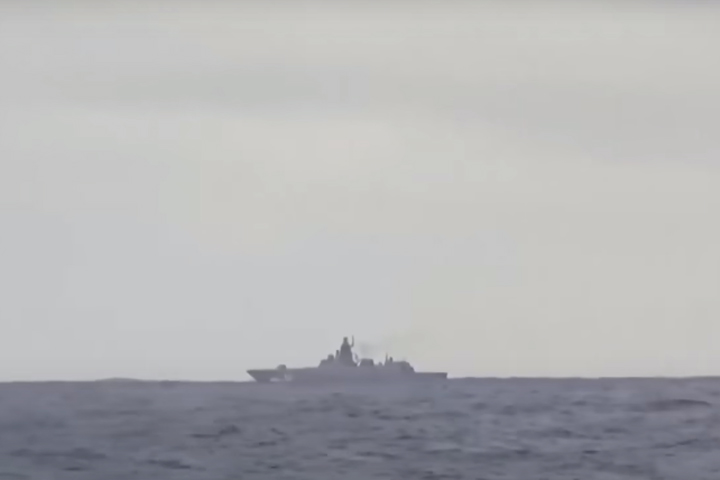


On Thursday, Chinese ships sailed into Japanese territorial waters in the East China Sea at two different points, leading Tokyo to protest Beijing.
Hirokazu Matsuno, the head of the Japanese government's press office, stated that following a Chinese military ship's incursion into Japanese territorial seas, Japan expressed "strong concern" and protested China through diplomatic channels.
A Chinese Navy Shupang-class survey ship reportedly entered Japanese seas close to Yakushima Island in Kagoshima Prefecture, off the island's southwest shore, at 10 a.m., according to the Japanese Defense Ministry, according to the Yomiuri Shimbun.
Around 1:00 PM, the naval warship departed. from Kuchinoerabu Island's west edge, moving westward, the government stated.
Since February, a Beijing-based navy warship has entered Japanese territory 11 times.
The United Nations Convention on the Law of the Sea forbids conducting surveys within the territorial waters of other nations.
However, international law also permits ships, even armed ships, to go across the territorial seas of other nations so long as they don't endanger the security and stability of those nations.
Two Chinese Coast Guard warships attempted to approach a Japanese fishing boat on the same day they entered Japanese territorial seas near the Senkaku Islands, also known as "Diaoyu" in China.
According to the Japanese Coast Guard (JCG), this was the first occasion since May 24 that Chinese coast guard warships have entered Japanese seas.
According to the JCG's 11th Regional Coast Guard Headquarters in Naha, the warships reached the region near Minami-Kojima Island in the Senkaku Islands soon after 11:50 a.m., according to the Yomiuri Shimbun.
Japan has mostly controlled the Senkaku Islands in the East China Sea since 1895, although Beijing started claiming ownership of the islands in the 1970s.
In order to prevent the Chinese warships from remaining in Japanese seas, Japan's coast guard soon dispatched patrol boats, and the Japanese government subsequently expressed its displeasure to China through diplomatic channels.
Every time Chinese coast guard ships enter Japanese territorial waters, "on-site Japanese patrol vessels demand them to leave," according to the Japanese Ministry of Foreign Affairs. It also states that the Japanese Government swiftly lodges a strong protest against the Chinese regime through diplomatic channels to prevent similar incidents from happening again.
After agreeing on June 3 to ensure the "reliability" of their military hotline operation in order to avert future conflicts amid escalating tensions in the East China Sea, the most recent incursions took place.
On June 3, all parties acknowledged the importance of fostering communication and exchange while making sure that their military hotline, which started operating in May, is being utilized "appropriately."
The hotline was created to connect the Self-military Forces leadership in Japan with Chinese military ministry representatives. The military hotline, according to the government of Japan, is "not only for responding when unforeseen circumstances occur, but also for building trust between the two countries."
Yasukazu Hamada, the Japanese defense minister, expressed his worry to Li Shangfu, his Chinese counterpart, at their meeting on June 3. He specifically mentioned the Senkaku Islands and the situation in the South and East China Seas.
Despite competing claims from other countries like Vietnam, Malaysia, Indonesia, Brunei, the Philippines, and Taiwan, the Chinese regime has staked claim to the majority of the South China Sea, citing the so-called "nine-dash line"—a hazily defined U-shaped delineation that separates the regions where it claims "historic rights" to resources within the sea.